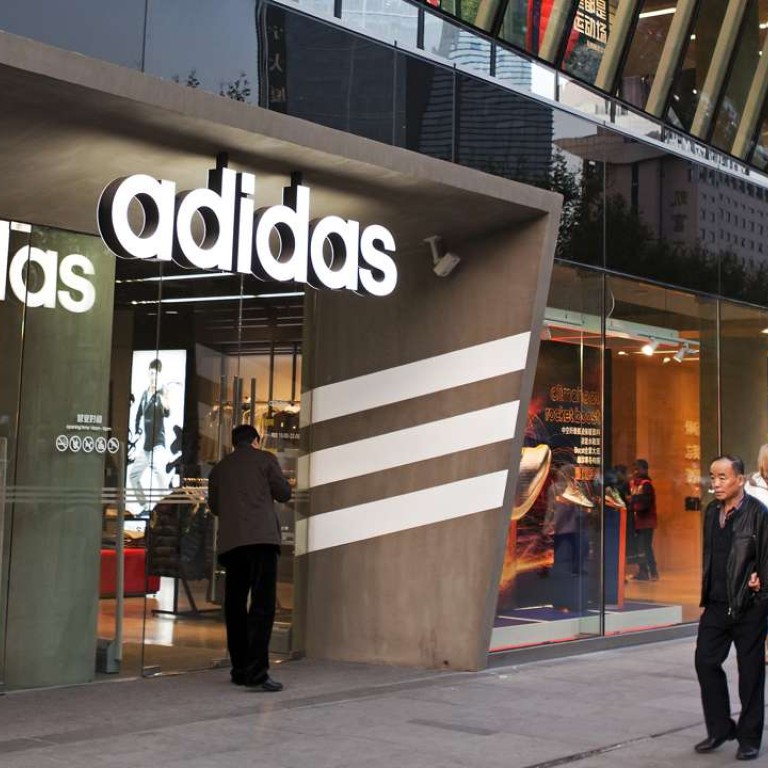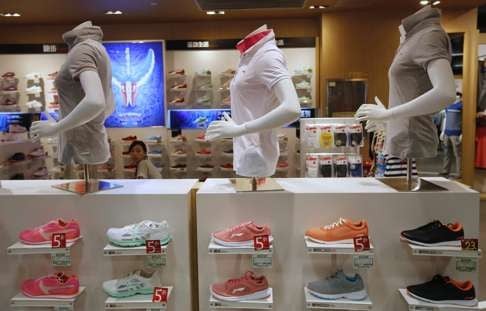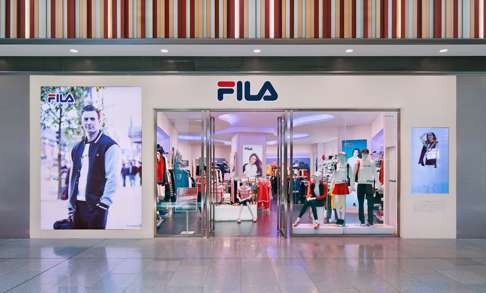
China’s wealthy buying global sportswear brands for show of luxury without the glitz
Rising interest in sport and wariness about conspicuous consumption has seen sales shift from prestige luxury brands to brands such as Adidas and Nike in China
For Beijinger Alex He, the cost of a trip to the mall can easily top US$3,000. He, 29, works in the finance industry, and while he doesn’t regularly go shopping for clothes, “when I do shop, I buy a lot,” he says.
His recent purchases include several pairs of Adidas shoes that he found at an outlet mall. He also fancies Under Armour shorts and shirts. “I used to buy a lot of luxury brands but in the last year or so I’ve been purchasing more of the sports brands because they are more comfortable and more fashionable,” said He.
Nike’s sales in greater China (including Hong Kong, Taiwan and Macau) are strong, with orders from September to April up between 27 and 35 per cent. On June 6, the company announced it would work with the Chinese Ministry of Education to train up to 7,000 physical education teachers.
“Today’s generation is the least physically active in history and we can help change that,” Nike president and chief executive Mark Parker said.
Sales in greater China for Adidas grew 38 per cent to US$2.79 billion last year and now account for about 15 per cent of global revenue. Last year, the world’s second-largest athletic brand opened more than 500 Chinese stores, taking its total to about 9,000, and wants to add another 500 this year.
“We are doing very well in China,” Adidas Group chief executive Herbert Hainer said. Sales in the country increased 22 per cent in the first quarter. “The Chinese consumer really appreciates what he gets from us,” he said.

The big foreign sportswear brands are safer bets for many consumers wondering about the political implications of their purchases. Chinese concerned about flaunting their big spending want to buy products that are obviously expensive but not excessively glitzy.
There’s still demand for “anything that gives the perception that there’s a functional element to it”, says Catherine Lim, an analyst in Singapore with Bloomberg Intelligence.
The Chinese government is encouraging this trend, hoping to drum up more interest in sports before Beijing hosts the Winter Olympics in 2022. “We have seen a great surge of consumers who have started to participate in running and other sports,” said Colin Currie, managing director for greater China of Adidas.
The Chinese sports industry is still underdeveloped. Sports are 3 per cent of GDP in the US but accounted for just 0.7 per cent of China’s GDP last year, or 474 billion yuan, according to a January report by ICBC analyst Jianpeng Yu. The government has a target of over 3 trillion yuan by 2020.
The sports boom has yet to pay off for some of China’s home-grown brands. Competition from Adidas, Nike and other foreign brands is hurting many of them, with order growth falling from high double digits last year to low-to-mid double digits in early 2016, according to a Fitch Ratings report published on June 3. Fitch expects “smaller domestic manufacturers’ margins to come under pressure in the next five years due to increasing competition, their limited pricing flexibility to distributors and rising labour costs”.
As more middle-class Chinese focus on fitness, consumers “may seek more value in brand identity and product differentiation, which are weaknesses of domestic brands”.
Peak Sport, which operates 6,000 stores nationwide, in May reported that same-store sales in the first quarter were flat, with the company blaming weaker consumer confidence and bad weather for the disappointing performance. Wisdom Sports, a Beijing-based sports event company, has a packed schedule of events this year, including 35 marathons and 75 cycling races. But Wisdom’s Hong Kong-listed shares have dropped 57 per cent this year.

To stop foreigners from dominating their home market, some Chinese sportswear brands are looking for foreign assistance. Anta Sports Products is the leading local name, with over 9,000 retail outlets in China, Hong Kong and Macau, and in February announced plans to form a joint venture with Japanese skiing brand Descente and Itochu, another sportswear maker from Japan.
Anta already sells Fila clothes in China, having in 2009 purchased the brand made famous by Bjorn Borg back in the 1970s, but only 15 per cent of its sales are of Fila products.

